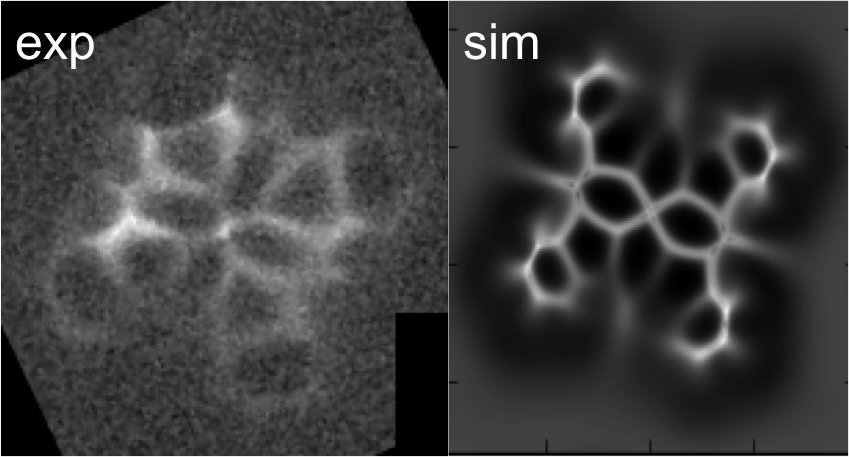




| 09:00-10:40 | Th1: Adsorbate and interface dynamics |
| 10:40-11:20 | Coffee break |
| 11:20-13:00 | Th2: STM-IETS and beyond |
| 13:00-15:30 | Lunch break (on your own) |
| 15:30-16:40 | Th3: Molecular films and 2D materials |
| 16:40-17:20 | Coffee break |
| 17:20-19:00 | Th4: Tip-enhanced vibrational spectroscopies |
| 20:30-23:00 | Conference dinner at Cofradía Vasca de Gastronomía, Old Town |
Chair: M. Alducin, San Sebastián, Spain
Contributed talk
The origin of high-resolution IETS-STM images of organic molecules with functionalized tips
Institute of Physics of the AS CR, Cukrovarnická 10, Prague, 162 00, Czech Republic
Very recently Chang et al. [1] published a novel mechanism of high-resolution imaging of molecules by means of inelastic electron tunneling spectroscopy. But the detailed mechanism of the high-resolution contrast was not clear. Here we will show that our simple mechanical model of high-resolution STM/AFM imaging mechanism [2] can rationalize the underlying IETS imaging mechanism.
Our model unveils a significant particle distortion towards local minima of the interaction potential at close distances, which causes discontinuities in both the frequency shift and the tunneling current. We will show that the bending also affects the hindered translation mode, which gives rise to variation of the characteristic peak of the inelastic tunneling current. Therefore we added on top of the numerical model calculation of the hindered translation mode of molecular probe at each tip position. We assume that variation of the inelastic electron tunneling current is proportional to variation of the hindered translation mode. We calculate the vibrational modes of the particle probe at each point by means of the dynamical matrix. The numerical IETS simulations explain very well the experimental evidence (see Fig. 1).

Figure 1: a) Experimental IETS-STM image of cobalt phthalocyanine on Ag(110) [1]; b) corresponding simulated inelastic tunnelling map mapping softening of the hindered translational modes of CO molecule placed on metallic tip [3].
[1] C. I. Chiang et al., Science 344, 885 (2014)
[2] P. Hapala et al., Phys. Rev. B. 90, 085421 (2014)
[3] P. Hapala et al., Phys. Rev. Lett. 113, 226101 (2014)